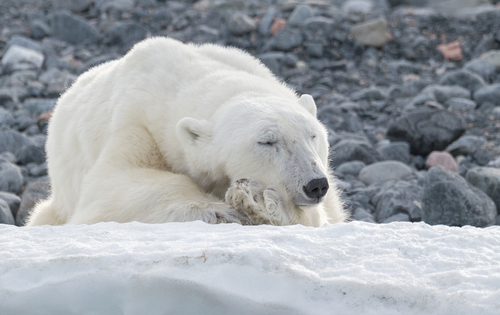
Polar Bear
The majestic Ursus maritimus thrives in the Arctic, with its insulating blubber and skilled swimming aiding in seal hunting. As apex predators, polar bears are vital for ecological balance, embodying the fragile beauty of their icy habitat.
20-30 years
Lifespan
150.0 - 600.0 kg
Weight
Length: 2.0 m
Size
Yellow, White
Color
3-5 years
Age of Sexual Maturity
2-3 years
Age of Weaning
25 mph
Top Speed
Vulnerable
Conservation Status
Unknown
Population Trend
Characteristics
Ursus maritimus, commonly known as the polar bear, is adapted to life in the Arctic's icy conditions. It boasts a thick layer of blubber, a water-repellent coat, and large paws for swimming. These apex predators primarily hunt seals and play a crucial role in maintaining the marine ecosystem's balance.
Distribution Range of the Polar Bear
Ursus maritimus, commonly known as the polar bear, is native to the circumpolar Arctic region. This includes the northernmost parts of North America (Canada and Alaska), Greenland, Svalbard (Norway), and Russia. Their range is primarily within the Arctic Circle, encompassing the Arctic Ocean and its surrounding seas and coastlines.
Polar Bear's Habitat
Environmental Conditions
Polar bears inhabit the sea ice of the Arctic Ocean and its adjacent seas and coastlines. They rely on sea ice for hunting seals, their primary prey, and are well-adapted to the cold, icy conditions. The climate in their habitat is characterized by long, harsh winters with temperatures often dropping below -30°C (-22°F), and short, cool summers.
Ecological Niche
As apex predators, polar bears play a crucial role in maintaining the balance of the Arctic ecosystem. They primarily hunt seals, particularly ringed and bearded seals, which they catch from the edge of the sea ice. Their hunting strategy and ability to swim long distances are adapted to the dynamic and often harsh ice-covered environment. Seasonal variations in sea ice extent significantly affect their hunting success and, consequently, their distribution and survival.
Copyright @ Nature Style Limited. All Rights Reserved.
 English
English